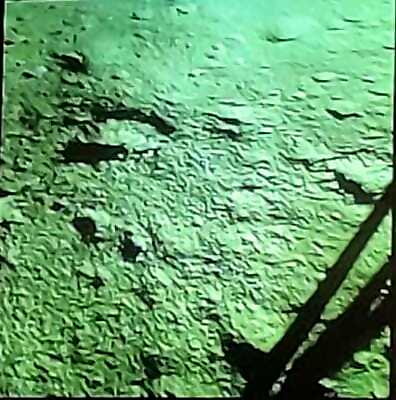
views
After creating history by landing successfully on the moon on Wednesday evening, Chandrayaan-3 clicked photos of the lunar surface. Some parts of the Lander can be seen in the photo.

First images of #VikramLander on the moon’s surface!Take a look with CNN-News18! Next challenge will be for #PragyanRover: @harishupadhya reports@ShivaniGupta_5 #Chandrayaan3 #Chandrayaan3Landing pic.twitter.com/aJn8kXKgLM
— News18 (@CNNnews18) August 23, 2023
Chandrayaan 3 LIVE Updates
Chandrayaan-3 Mission:Updates:The communication link is established between the Ch-3 Lander and MOX-ISTRAC, Bengaluru.
Here are the images from the Lander Horizontal Velocity Camera taken during the descent. #Chandrayaan_3#Ch3 pic.twitter.com/ctjpxZmbom
— ISRO (@isro) August 23, 2023
India became the first country to reach the uncharted south pole of Earth’s only natural satellite. The LM comprising the lander (Vikram) and the rover (Pragyan), made touch down near the south polar region of the Moon at around 6:04 pm on Wednesday.
After landing, the Indian Space Research Organisation (ISRO) quoted the spacecraft and said, “India, I reached my destination.”
Congratulating the nation, ISRO took to X (formally Twitter) said, ‘India, I reached my destination and you too!” “Chandrayaan-3 has successfully soft-landed on the moon,” it added.
Chandrayaan-3 Mission:‘India????????,I reached my destinationand you too!’: Chandrayaan-3Chandrayaan-3 has successfullysoft-landed on the moon ????!.
Congratulations, India????????!#Chandrayaan_3#Ch3
— ISRO (@isro) August 23, 2023
After the soft-landing, the rover will descend from the lander’s belly, onto the Moon’s surface, using one of its side panels, which will act as a ramp. On landing the lander may have to face the challenge of lunar dust due to firing of onboard engines close to the moon’s surface.
The lander and rover will have a mission life of one lunar day (about 14 earth days) to study the surroundings there. However, ISRO officials do not rule out the possibility of them coming to life for another lunar day.
CHANDRAYAAN-3
Chandrayaan-3 comprises an indigenous lander module, a propulsion module, and a rover. Its objectives include the development and demonstration of new technologies required for interplanetary missions.
The lander will have the capability to make a soft landing at a predetermined lunar site and deploy the rover, which will perform chemical analysis of the lunar surface during its mobility phase, as per reports.
Scientists and astronomers suspect the presence of ice and valuable mineral resources in these dark regions. The exploration will not be limited to the surface but will also focus on studying the sub-surface and exosphere, as per reports. The rover will communicate with Earth using an orbiter borrowed from Chandrayaan-2. Surface analysis will be conducted by capturing images from a distance of 100 km above the lunar orbit.

















Comments
0 comment